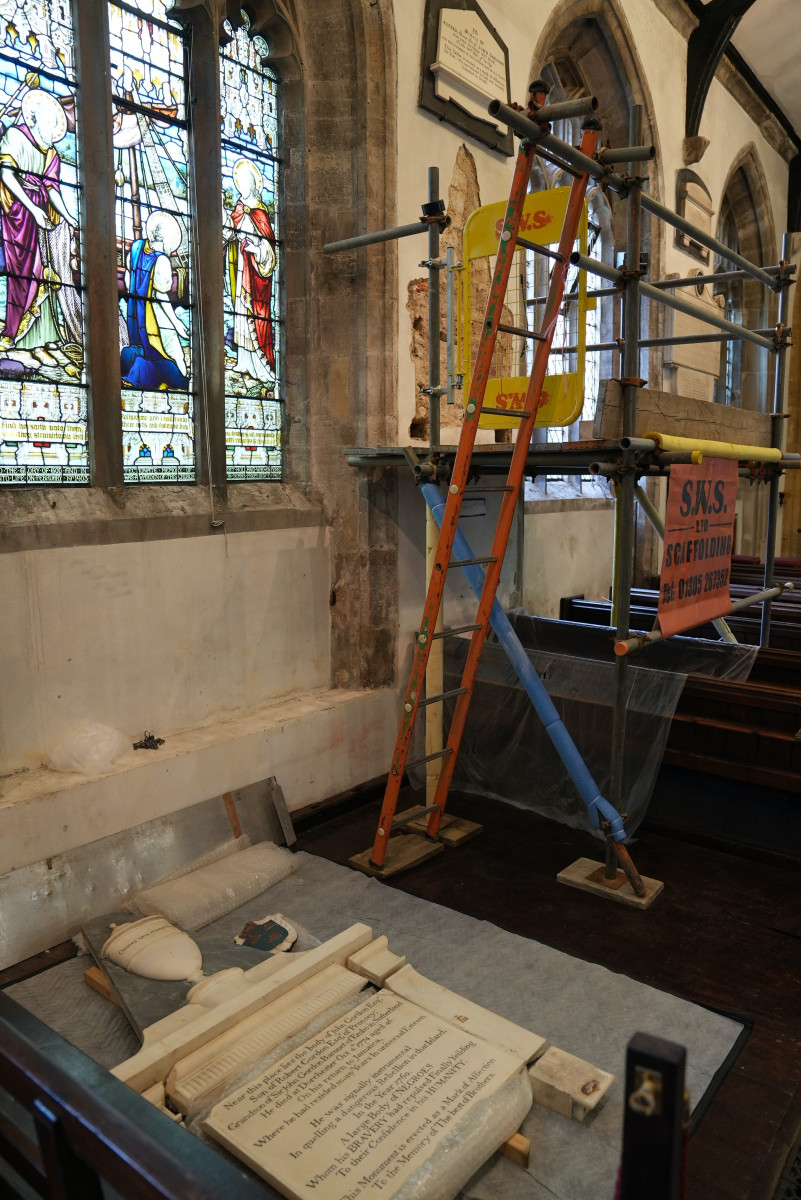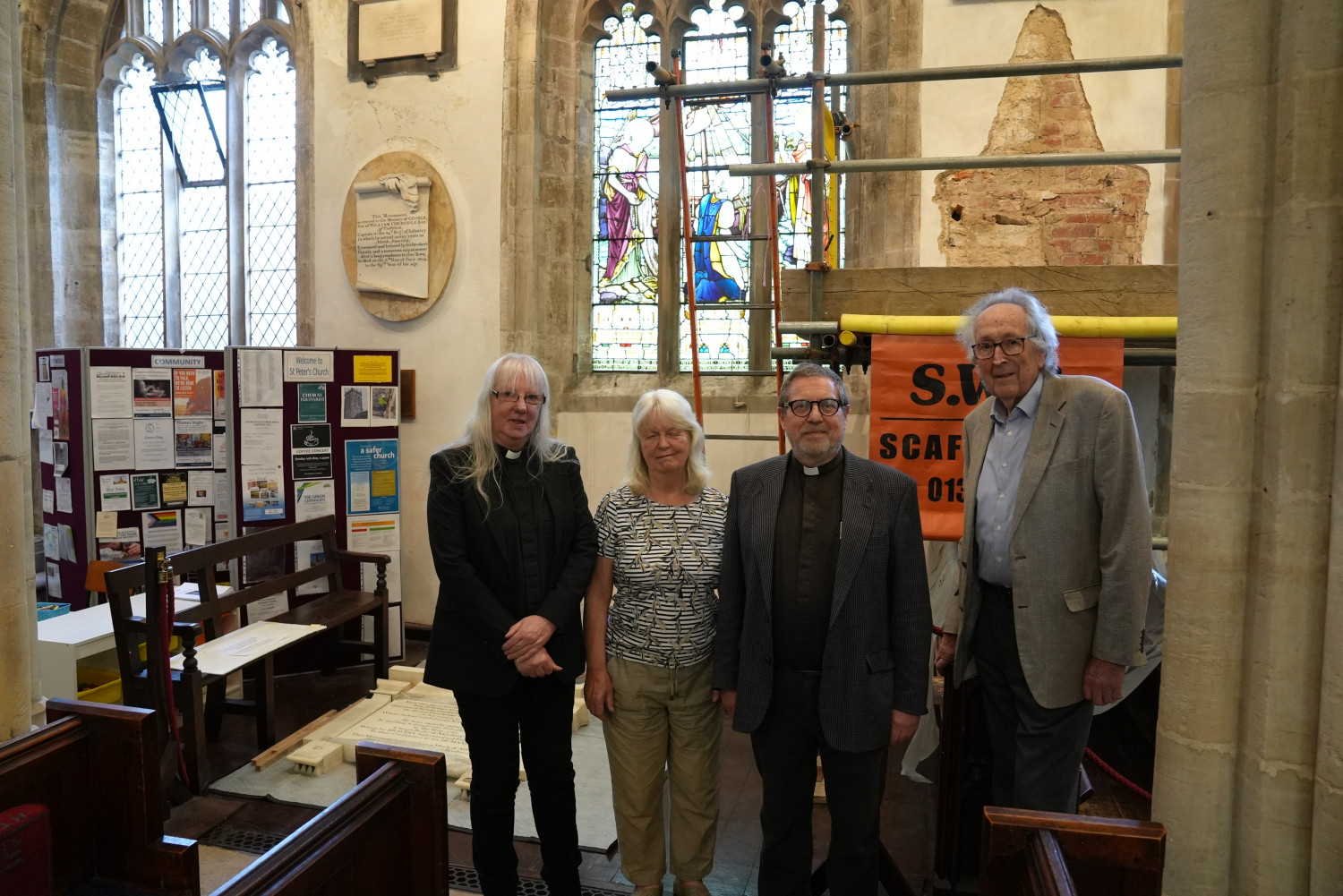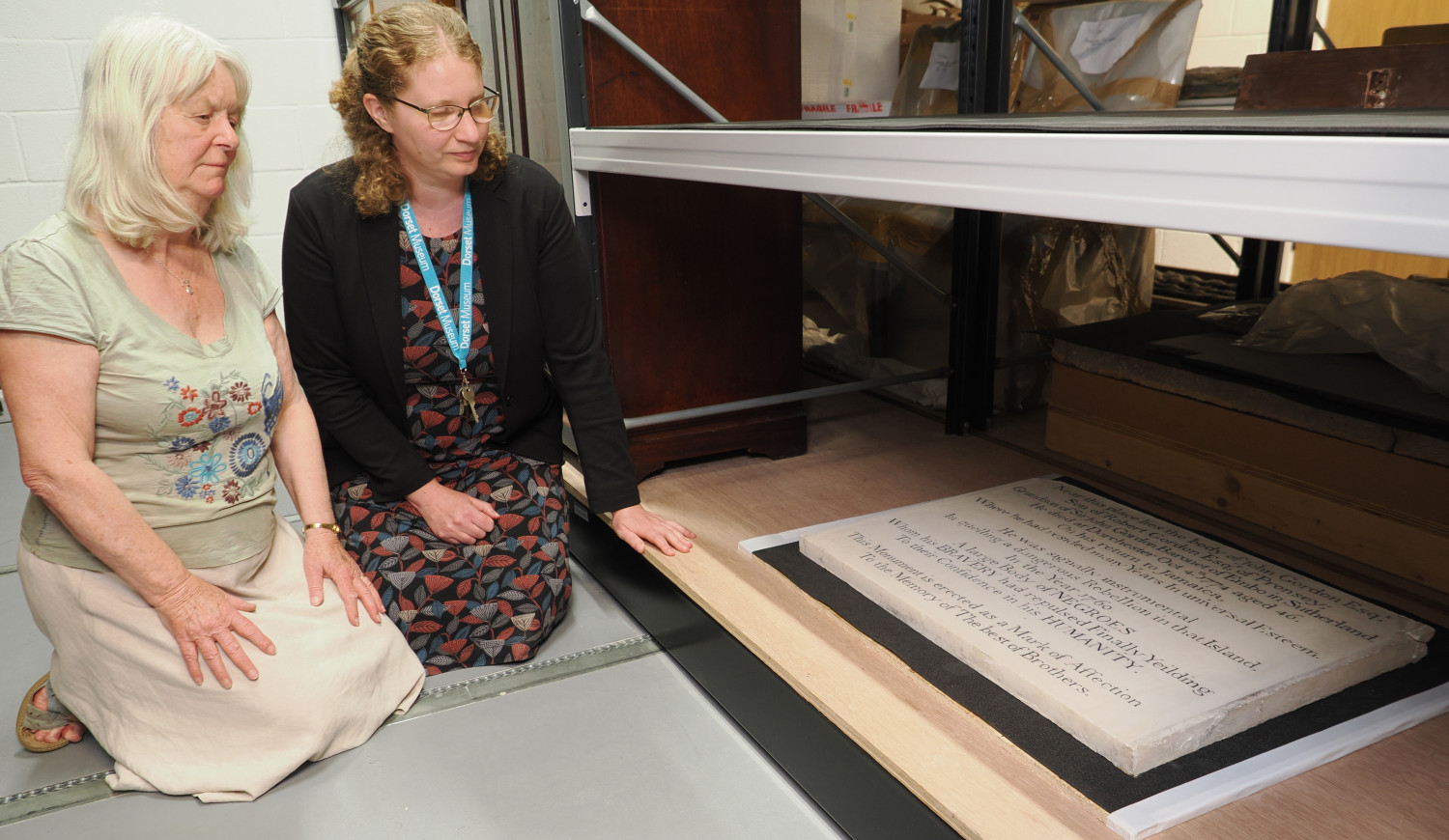Following years of consultation and research, a memorial to a slave owner has finally been removed from St Peter’s Church, Dorchester, and sent to a local museum.
The memorial commemorated John Gordon, a manager in Jamaica of his own plantations and those of other, absentee British owners. Originally from Scotland, Gordon died in 1774 in Dorchester as he was travelling to Falmouth to catch a return ship to Jamaica, but otherwise had no known connections to the area.
Worshippers and visitors to St Peter’s had long felt the monument had no place in a church which sought to be open and welcoming to everyone and anyone.
The monument itself was highly unusual, recording an actual instance of rebellion by enslaved people - ‘Tacky’s Revolt of 1760’, and is as such considered to be of historical importance. The wording on the memorial, however, explicitly refers to Gordon’s actions in quelling the rebellion, praising him and using much offensive language.
Max Hebditch, a historian and attendee of St Peter’s, carried out thorough research into John Gordon’s history before applying for the monument to be removed from the wall and put in the Dorset Museum next door instead. Permission was granted by the diocese last year allowing for its removal and its exchange for a replacement plaque.
Chancellor, Ruth Arlow KC, said that the monument “celebrated in language of acclamation the violent quelling of a rebellion by enslaved people against a status that is now universally acknowledged as morally repugnant and contrary to Christian doctrine.”

Its continued presence in the building seemed to imply the continued support - or at least toleration and acceptance of this discrimination and oppression - she said, and was inconsistent with the message of the universality of God’s love that the community of St Peter’s sought to foster and share.
Churchwarden, Val Potter, managed the process to remove the memorial on behalf of the church. She said: “It has been a long process and concern over the wording of the monument began some years ago when visitors and members of the congregation expressed their concern. We were engaged in the process at the same time as the Church of England was producing its national guidelines on handling Contested Heritage. We had useful conversations with them as they viewed this as more explicit and extreme than other church monuments, agreeing that some monuments do contradict the message and mission of our churches to be welcoming to all, valuing all as equally loved by God.”

She added: “It is good to see this important historic monument in the museum, a more appropriate place to retain it than a Church offering unconditional welcome. We are grateful to everyone who has given their help and carefully considered contributions to the process.”
Harvard University Professor Vincent Brown, author of 'Tacky’s Revolt, the Story of an Atlantic Slave War', supported research into the monument undertaken by the church.
He said: "The Diocese of Salisbury's decision represents a model for taking history seriously by honouring the values of the present without erasing or forgetting the past. To remember enslavers is not to celebrate them. Rather, it is to acknowledge the dark legacy of their influence on our world."
The monument’s removal was carried out by Humphries and Jones conservators. Partner Emma Norris said the work was unlike anything they had done before. “Normally the sort of work we do is addressing conservation issues where it’s a case of removing a monument to address issues and then reinstating the monument in the same location.
“When you remove a monument without it being returned to its original position that isn’t something that would naturally sit with your idea of conservation, as its normally minimal intervention. But the fact that the arguments had been put forward for it being relocated to a museum where it can be reinterpreted and more explanation can be given to the history, that seems an appropriate stance in this situation.”
The Archdeacon of Sherborne, Ven Penny Sayer, said: “Local people were asking if it was appropriate to have such a monument in a church, or is it more appropriate to have it somewhere else. It is really important that the story is told, particularly because it mentions Tacky’s revolt. “There were very careful steps taken by the church to ensure the monument was researched and the right process followed.”
A simple replacement plaque to John Gordon is now being designed by local stonemasons Grassbys to fit in the same space in the Church, which will carry only the details of his life and death. John Gordon’s descendants have been consulted on the removal and planned replacement memorial.
The Gordon memorial will be held on loan at Dorset Museum, where it is viewable on request.

Watch a video of the removal this week.


